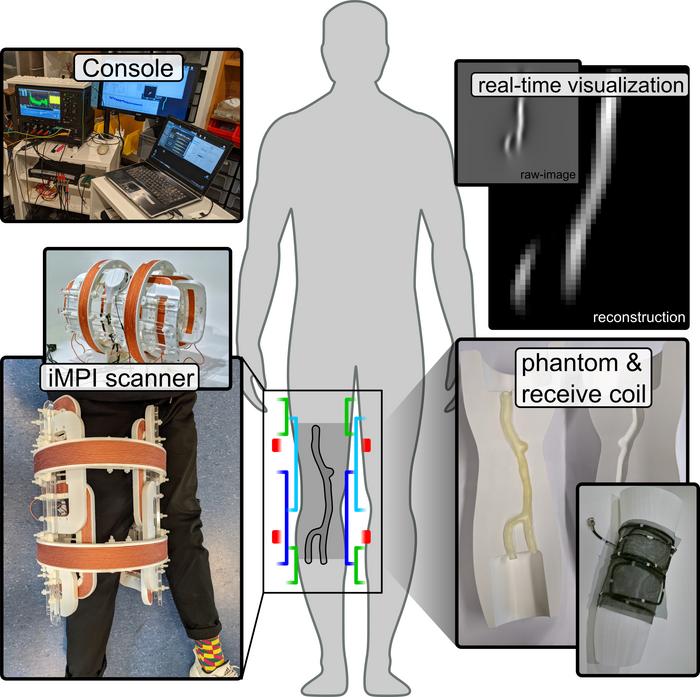
In the heart of Central Europe, a silent and insidious shift is unfolding—one that traces the intricate pathways of human exposure to polycyclic aromatic hydrocarbons (PAHs), a complex group of environmental pollutants with potent health implications. Recent research spearheaded by a team of environmental scientists reveals a changing pattern in the landscape of PAH exposure among Central European populations. This comprehensive investigation sheds new light on how historic industrial activities, evolving urban lifestyles, and regulatory interventions have sculpted the chemical environment around us, with profound consequences for public health.
Polycyclic aromatic hydrocarbons, a diverse class of organic compounds characterized by multiple fused aromatic rings, are primarily formed through incomplete combustion of organic material. Sources range from vehicle exhausts, residential heating, industrial emissions, to even wildfires. Due to their ubiquitous nature and carcinogenic potential, understanding trends in human exposure is critical. The latest study meticulously maps exposure trajectories from the late 20th century through the early 21st century, utilizing biomonitoring data and sophisticated analytical techniques, revealing evolving exposure dynamics that mirror technological and societal changes in Central Europe.
The study’s methodological backbone involved analyzing archived human biomonitoring data spanning several decades, including urinary metabolites that serve as reliable biomarkers of PAH exposure. By assessing these biomarkers across time and populations, the researchers were able to accurately chart exposure trends and identify shifts tied to lifestyle, policy, and environmental transformations. Their data underscore that exposure profiles are not static but respond dynamically to factors such as shifts in fuel usage, air pollution control measures, and changing dietary habits.
.adsslot_YuRmefoArw{width:728px !important;height:90px !important;}
@media(max-width:1199px){ .adsslot_YuRmefoArw{width:468px !important;height:60px !important;}
}
@media(max-width:767px){ .adsslot_YuRmefoArw{width:320px !important;height:50px !important;}
}
ADVERTISEMENT
Intriguingly, the research highlights a marked decrease in exposure to heavier PAHs associated with high-temperature combustion, reflective of stringent industrial regulations and improvements in emission control technologies implemented over recent decades. This suggests that public health interventions aimed at curtailing industrial pollution have been partially successful. However, juxtaposed against this positive trend is a subtle rise in exposure to lower molecular weight PAHs, which are often linked to consumer product usage and urban traffic emissions, indicating emerging sources that warrant attention.
Furthermore, the study delves deep into the spatial dimensions of exposure, unveiling differences not only between urban and rural populations but also across age cohorts. Urban residents showed consistently higher levels of PAH biomarkers compared to their rural counterparts, likely due to increased vehicular traffic and urban heating methods. Children exhibited a particularly distinct exposure pattern, which raises concerns given the developmental vulnerability during early life stages and the established carcinogenic risks of several PAHs.
The temporal dynamics revealed complexities tied to seasonal variations, with heightened exposure recorded during colder months. This seasonal trend correlates with amplified residential heating activities, often reliant on combustion of coal and wood, traditional fuel sources still prevalent in parts of Central Europe. The findings suggest that while industrial sources have diminished, residential energy practices continue to pose significant and perhaps underappreciated risks for PAH exposure, especially in colder climates.
On a molecular level, the researchers employed advanced chromatographic and mass spectrometric techniques to dissect the urinary metabolite profiles, enabling differentiation between various PAH compounds. This granularity allowed the team to pinpoint specific PAHs driving exposure trends and link them to probable emission sources. Such detailed chemical fingerprinting is pivotal in guiding public health strategies aimed at mitigating exposure and reducing disease burden.
The researchers did not merely stop at quantifying exposure; they extended their inquiry to infer potential health implications, particularly emphasizing the carcinogenic and mutagenic properties of certain PAHs detected. Longitudinal exposure to PAHs has been robustly associated with lung, bladder, and skin cancers, as well as cardiovascular and respiratory diseases. By establishing exposure trends, the study provides a foundation to forecast future public health scenarios and tailor interventions accordingly.
This work also carries significant policy implications. The nuanced shifts in exposure profiles highlight the need for adaptive regulatory frameworks that extend beyond traditional industrial emission controls and address emerging urban and residential sources. The findings advocate for enhanced awareness and policy focus on non-industrial emission sources, promoting cleaner fuel alternatives and efficient combustion technologies at the household level.
Moreover, the study underscores the imperative of continuous and comprehensive biomonitoring to monitor environmental chemical burdens. The dynamic nature of PAH exposure documented here exemplifies how social, technological, and environmental changes can rapidly alter risk landscapes, necessitating vigilance and responsive public health policies. This research serves as a clarion call to maintain and expand human biomonitoring programs as essential tools in environmental health surveillance.
Central to this investigation is the multidisciplinary collaboration that brought together expertise in environmental chemistry, epidemiology, toxicology, and public health. Such integrative approaches enable robust interpretations of complex datasets and facilitate actionable insights. The study exemplifies how modern environmental health research transcends traditional disciplinary boundaries to confront pressing societal challenges.
Notably, the researchers emphasize that despite overall declines in some PAH exposures, persistent background levels in urban populations may still present chronic health risks. These persistent exposures highlight the importance of continued urban air quality management and public engagement on mitigating personal exposure, particularly through behavioral changes such as minimizing exposure during peak traffic hours and promoting cleaner household energy solutions.
In reflecting on future directions, the study points toward the potential influence of emerging technologies and climate change on PAH emission patterns. For instance, shifts toward electric mobility and renewable energy could further reduce certain PAH sources, while climate-driven changes in wildfire frequency might exacerbate episodic exposure events. This anticipatory perspective underscores the need for adaptable environmental health research frameworks.
In conclusion, this landmark study illuminates the evolving tapestry of polycyclic aromatic hydrocarbon exposure in Central Europe, blending rigorous analytical science with contextual socio-environmental understanding. It elevates the discourse on environmental carcinogens beyond mere snapshots, presenting a dynamic portrait of risk shaped by human activity and policy. As societies strive toward sustainable development, such scientific narratives are indispensable for safeguarding population health against the stealthy imprints of environmental pollution.
Subject of Research: Changing patterns of human exposure to polycyclic aromatic hydrocarbons (PAHs) in Central Europe over time
Article Title: Changing pattern of exposure to polycyclic aromatic hydrocarbons over time in the Central European population
Article References:
Smetanová, S., Jbebli, A., Kohoutek, J. et al. Changing pattern of exposure to polycyclic aromatic hydrocarbons over time in the Central European population.
J Expo Sci Environ Epidemiol (2025). https://doi.org/10.1038/s41370-025-00793-z
Image Credits: AI Generated
DOI: https://doi.org/10.1038/s41370-025-00793-z
Tags: carcinogenic compounds in the environmentCentral Europe environmental pollutantsevolving exposure dynamics to PAHshealth implications of PAHshistorical industrial activities and PAHshuman biomonitoring data analysispolycyclic aromatic hydrocarbons exposurepublic health and environmental scienceregulatory interventions on PAHssources of polycyclic aromatic hydrocarbonstechnological changes and pollution trendsurban lifestyle and pollution






